 W
WPostal history is the study of postal systems and how they operate and, or, the study of the use of postage stamps and covers and associated postal artifacts illustrating historical episodes in the development of postal systems. The term is attributed to Robson Lowe, a professional philatelist, stamp dealer and stamp auctioneer, who made the first organised study of the subject in the 1930s and described philatelists as "students of science", but postal historians as "students of humanity". More precisely, philatelists describe postal history as the study of rates, routes, markings, and means.
 W
WThe 1930 Graf Zeppelin stamps were a set of three airmail postage stamps, each depicting the image of the Graf Zeppelin, issued by the United States Post Office Department in 1930 exclusively for delivery of mail carried aboard that airship. Although the stamps were valid for postage on mail sent on the Zeppelin Pan American flight from Germany to the United States, via Brazil, the set was marketed to collectors and was largely intended to promote the route. 93.5% of the revenue generated by the sale of these stamps went to the Zeppelin Airship Works in Germany. The stamps were issued as a gesture of goodwill toward Germany. The three stamps were used briefly and then withdrawn from sale. The remainder of the stock was destroyed by the Post Office Department. Due to the high cost of the stamps during the Great Depression, most collectors and the general public could not afford them. Consequently, only about 227,000 of the stamps were sold, just 7% of the total printed, making them relatively scarce and prized by collectors.
 W
WABCorp is an American corporation providing contract manufacturing and related services to the authentication, payment and secure access business sectors. Its history dates back to 1795 as a secure engraver and printer, and assisting the newly formed First Bank of the United States to design and produce more counterfeit resistant currency. The company has facilities in the United States, Canada, Australia, and New Zealand. The American Bank Note Company is a wholly owned subsidiary of ABCorp.
 W
WThe American Letter Mail Company was started by Lysander Spooner in 1844, competing with the presumed legal monopoly of the United States Post Office.
 W
WAngarum was the name of the royal riding post in the Persian Empire during the Achaemenid period. In book 8, paragraph 98 of The Persian Wars, the historian Herodotus talks about the couriers: "Nothing mortal travels so fast as these Persian messengers. The entire plan is a Persian invention; and this is the method of it. Along the whole line of road there are men stationed with horses, in number equal to the number of days which the journey takes, allowing a man and horse to each day; and these men will not be hindered from accomplishing at their best speed the distance which they have to go, either by snow, rain, heat, or by the darkness of night. The first rider delivers his despatch to the second and the second passes it to the third; and so it is borne from hand to hand along the whole line, like the light in the torch-race, which the Greeks celebrate to Vulcan. The Persians give the riding post in this manner, the name of Angarum."
 W
WBicycle Mail - The topic of Bicycle Mail can cover two separate and distinctive areas. It can be used to describe the Thematic (Topical) collecting and or study of stamps bearing the image of bicycles, or more commonly used to describe a specific category of Special Delivery, where mail was delivered by bicycle and is identified by stamp and or postal mark used.
 W
WThe Casuchas del Rey or Casuchas de la Cordillera are a string of small mountain shelters made of stone masonry along the route of the Uspallata Pass of the Principal Cordillera in the Andes of Chile and Argentina. The shelters were built to improve the intra-colonial postal system of the Spanish Empire.
 W
WA catcher pouch was a mail bag used by Railway Post Offices of the nineteenth century and the early twentieth century. Its use was limited to exchanges onto moving trains. The specially constructed catcher pouch was grabbed by the catcher mechanism in the passing railway car and the catcher pouch would release from the holding rings on the mail crane. This technique was known as "mail on the fly". Starting in the 1870s the use of this technique of the Railway Mail Service was an important issue in the United States. It was a popular technique and the backbone of the United States Postal Service through the 1930s.
 W
WA cecogram, also known as literature for the blind, is a letter or a parcel that contains documents or items intended for visually impaired persons. Cecograms can be sent or received by such persons, as well as by organisations that provide assistance to the visually impaired. Cecograms are either partially or entirely exempt from postage.
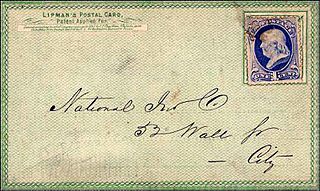 W
WJohn P. Charlton was an American printer and stationer from Philadelphia, Pennsylvania, who is often credited as the inventor of the private postal card, which he copyrighted in 1861 together with Hymen Lipman.
 W
WClapper Post was an urban postal service in Vienna, the capital of Austria, and in some of the country's other cities, that began in 1772. Its name refers to a clapper with which mail carriers announced their arrival. In Vienna, it existed for more than ten years.
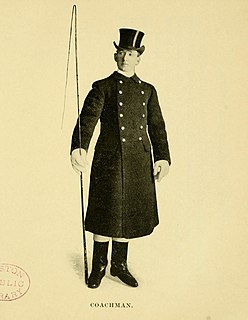 W
WA coachman is a man whose business it is to drive a coach or carriage, a horse-drawn vehicle designed for the conveyance of passengers. A coachman has also been called a coachee, coachy or whip.
 W
WA crash cover is a philatelic term for a type of cover, meaning an envelope or package that has been recovered from a fixed-wing aircraft, airship or aeroplane crash, train wreck, shipwreck or other accident. Crash covers are a type of interrupted mail.
 W
WA discontinued post office or DPO is an American postal term for a post office which has been discontinued. Some are in ghost towns, some victims of consolidation of mail service as small post offices are closed or a city expands. The introduction of Rural Free Delivery, RFD, in 1902 led to the closure of many post offices, which peaked in 1901 at 76,945. In the United States, which was mostly rural, mail previously had been picked up in rural areas at small local post offices, home delivery being limited to urban areas until experimentation with rural delivery began in 1890.
 W
WDisinfected mail or fumigated mail is mail that has had some form of disinfection or fumigation applied to it by postal authorities, with the intention of preventing the spread of epidemics via letters sent from infected areas.
 W
WDogsled mail or dog team mail is mail carried by dogsled. This form of animal mail transport saw limited use in the northern parts of Alaska, Canada and Russia during the first half of the 20th century.
 W
WAn envelope is a common packaging item, usually made of thin, flat material. It is designed to contain a flat object, such as a letter or card.
 W
WFonopost, or Phonopost, was an experimental postal service in Argentina to record a person's voice and deliver the resulting recording by mail.
 W
WA free frank was a mark applied by means of a hand-stamp to parliamentary mail in Britain to indicate that the mailed item did not require postage. The privilege of free franking was granted to four different classes: Members of Parliament; peers sitting in the House of Lords; office-holders, largely as stipulated by Acts of Parliament; and to archbishops and bishops sitting in the House of Lords. Requirement for free franking were that the mailed cover had to be signed by the official sender. As a result, free franks were avidly sought during the first three decades of the nineteenth century for autograph collections. This was accomplished by cutting out the front panels of the envelope which carried the inscriptions which were required under the use of this privilege. These panels are referred to by collectors as free fronts.
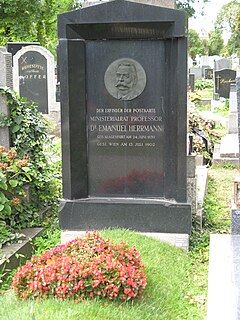 W
WEmanuel Alexander Herrmann was an Austrian national economist. He is considered the decisive last in an international line of inventors of the postal card.
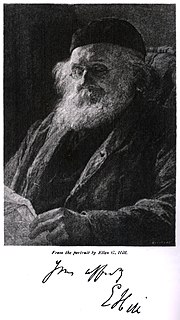 W
WEdwin Hill was a Victorian postal official, the older brother of Rowland Hill, who invented a mechanical system to make envelopes and who campaigned for legal and political change.
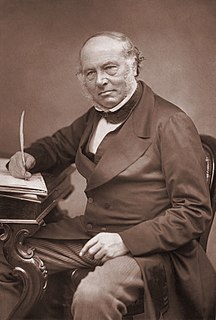 W
WSir Rowland Hill, KCB, FRS was an English teacher, inventor and social reformer. He campaigned for a comprehensive reform of the postal system, based on the concept of Uniform Penny Post and his solution of pre-payment, facilitating the safe, speedy and cheap transfer of letters. Hill later served as a government postal official, and he is usually credited with originating the basic concepts of the modern postal service, including the invention of the postage stamp.
 W
WThe Horseshoe route was a flying boat route between Sydney, Australia, and Durban, South Africa, via Singapore and Cairo during World War II. Mail could then be sent by sea between South Africa and Britain. Using Short Empire C Class S23 and S33 flying boats, British Overseas Airways Corporation (BOAC) operated the section between Durban and Singapore while Qantas Empire Airways operated the section between Singapore and Sydney. In October 1941, Qantas took over the Karachi - Singapore section as BOAC were short of pilots.
 W
WLamp boxes are the smallest of the post boxes used by the Royal Mail in the UK, by its counterparts in the Commonwealth of Nations and also by An Post in Ireland. Their name derives from the fact that they were designed to be affixed to lamp posts, although they may equally be found embedded in walls or mounted on poles.
 W
WLetterlocking is the act of folding and securing a written message which could be on papyrus, parchment, or paper, so that it does not require an envelope or additional enclosure. It is a document security tradition which utilizes folding and cutting. The process dates to the 13th century in Western history, corresponding with the availability of flexible writing paper. Letterlocking uses small slits, tabs, and holes placed directly into a letter, which combined with folding techniques are used to secure the letter ("letterpacket"), preventing reading the letter without breaking seals or slips, providing a means of tamper resistance and tamper evidence. These folds and holes may be additionally secured with string and sealing wax.
 W
WA mail bag or mailbag is a generic term for a type of bag used for collecting, carrying, categorizing, and classifying different types of postal material, depending on its priority, destination, and method of transport. It is oftentimes used by a post office system in transporting these different grades of mail. The mailbag is carried by some means of transporting like a mail carrier, animal, or a mobile post office. Letters and printed material delivered by mail in the seventeen-hundreds were carried by horse in a saddle bag. There are several different types of mailbags for different purposes. These different styles of mailbags depend on its size and purpose. It can range from "a large bag used for transporting mail on a truck, plane, etc." to a simple "postbag" used by a mail carrier to deliver mail.
 W
WMail boats or postal boats are a boat or ship used for the delivery of mail and sometimes transportation of goods, people and vehicles in communities where bodies of water commonly separate or separated settlements, towns or cities often where bridges were or are not available. They were or are also used where water transport is more efficient or cost effective or other means of transport to the destination is impractical even when roads or flights may be another option.
 W
WA catcher pouch was a mail bag used by Railway Post Offices of the nineteenth century and the early twentieth century. Its use was limited to exchanges onto moving trains. The specially constructed catcher pouch was grabbed by the catcher mechanism in the passing railway car and the catcher pouch would release from the holding rings on the mail crane. This technique was known as "mail on the fly". Starting in the 1870s the use of this technique of the Railway Mail Service was an important issue in the United States. It was a popular technique and the backbone of the United States Postal Service through the 1930s.
 W
WA mail pouch or mailpouch is a container for mail, designed to transport first-class, registered mail, domestic mail and military mail. It usually has a drawstring, and is made of a stronger material than mail sacks and is designed to lock at the top with a mechanism system consisting of special closely spaced eyelets and a strong strap to secure the top where access into the bag is closed off and locked, where a mail sack does not have these features.
 W
WA mail sack or mailsack is a mail bag used to carry large quantities of mail.
 W
WA mail satchel is a type of mail bag that a letter carrier uses over-the-shoulder for assisting the delivery of personal mail on a designated route.
 W
WMulready stationery describes the postal stationery letter sheets and envelopes that were introduced as part of the British Post Office postal reforms of 1840. They went on sale on 1 May 1840, and were valid for use from 6 May. The Mulready name arises from the fact that William Mulready, a well-known artist of the time, was commissioned to illustrate the part of the letter sheets and envelopes which corresponded with the face area.
 W
WA postal museum is a museum dedicated to the display of objects relating to the postal service. A subcategory of postal museums are philatelic museums, which focus on philately and postage stamps.
 W
WOwney, was a terrier mix adopted in the United States as the first unofficial postal mascot by the Albany, New York, post office about 1888. The Albany mail professionals recommended the dog to their Railway Mail Service colleagues, and he became a nationwide mascot for nine years (1888–97). He traveled throughout the 48 contiguous United States and voyaged around the world traveling over 140,000 miles in his lifetime as a mascot of the Railway Post Office and the United States Postal Service. He is best known for being the subject of commemorative activities, including a 2011 U.S. postage stamp.
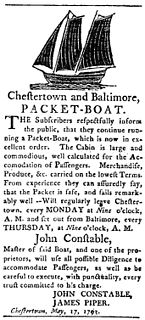 W
WPacket boats were medium-sized boats designed for domestic mail, passenger, and freight transportation in European countries and in North American rivers and canals, some of them steam driven. They were used extensively during the 18th and 19th centuries and featured regularly scheduled service.
 W
WThe Paris pneumatic post was a pneumatic tube message-carrying service that operated in the French capital from 1866. It was established because of the popularity of the electric telegraph in the city which had led to the signal cables becoming overloaded and messages being sent by road. The pneumatic system allowed the telegraph companies to send messages underground through sealed lines laid in the Paris sewers, bypassing any traffic on the roads above. The network was taken into public ownership in 1879, under the Ministry of Posts and Telegraphs, and opened to messages sent by the general public. Messages continued to be considered officially as telegrams and for a fixed cost users could write a message on a "petit bleu" form to be sent anywhere in the city. After arriving at the office nearest the recipient it would be taken to their address by a courier.
 W
WPigeon post is the use of homing pigeons to carry messages. Pigeons are effective as messengers due to their natural homing abilities. The pigeons are transported to a destination in cages, where they are attached with messages, then the pigeon naturally flies back to its home where the recipient could read the message. They have been used in many places around the world. Pigeons have also been used to great effect in military situations, and are in this case referred to as war pigeon.
 W
WA mochila is a removable lightweight leather cover put over a horse's saddle. In the 19th century, it was used as a mail bag by the Pony Express. Slits were cut through the eighth-inch leather to allow access to the saddle horn and cantle.
 W
WA portmanteau was a traveling bag used as a mailbag. During the eighteenth and nineteenth centuries, both newspapers and letters were transported in these leather mailbags that opened into two sections.
 W
WThe Prague pneumatic post is the world's last preserved municipal pneumatic post system. It is an underground system of metal tubes under the wider centre of Prague, totaling about 55 kilometres (34 mi) in length. The system started service in 1889 and remained in use by the government, banks and the media until it was rendered inoperative by the August 2002 European floods.
 W
WPre-adhesive mail, also called pre-stamp mail, are letters carried in mail systems before the issuance of postage stamps. A stampless cover is another description and generally also refers to any item of mail sent before the issuance of postage stamps but it can also refer to mail sent, after the introduction of postage stamps, unpaid or without the pre-payment being indicated by the affixing of a postage stamp; it could have been pre-paid in cash and marked paid.
 W
WIn the United States, a railway post office, commonly abbreviated as RPO, was a railroad car that was normally operated in passenger service as a means to sort mail en route, in order to speed delivery. The RPO was staffed by highly trained Railway Mail Service postal clerks, and was off-limits to the passengers on the train. In the UK and Ireland, the equivalent term was Travelling Post Office (TPO).
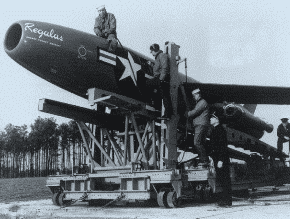 W
WRocket mail is the delivery of mail by rocket or missile. The rocket lands by deploying an internal parachute upon arrival. It has been attempted by various organizations in many different countries, with varying levels of success. It has never become widely seen as being a viable option for delivering mail, due to the cost of the schemes and numerous failures.
 W
WA runner was a foot soldier responsible for carrying messages between units during war. Runners were very important to military communications, before telecommunications became commonplace.
 W
WThe state communications in the Neo-Assyrian Empire allowed the Assyrian king and his officials to send and receive messages across the empire quickly and reliably. Messages were sent using a relay system which was revolutionary for the early first millennium BCE. Messages were carried by military riders who travelled on mules. At intervals the riders stopped at purpose-built stations, and the messages were passed to other riders with fresh mounts. The stations were positioned at regular intervals along the imperial highway system. Because messages could be transmitted without delay or waiting for riders to rest the system provided unprecedented communication speed, which was not surpassed in the Middle East until the introduction of the telegraph.
 W
WWar tax due stamp is a kind of war tax and postage due stamps that was used for mail when the war tax has not been paid by the sender. They were issued in Romania between 1915 and 1921.